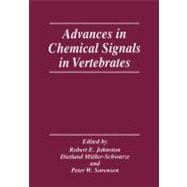
What is included with this book?
| Comparative and Evolutionary Perspectives | |||||
|
1 | (14) | |||
|
|||||
|
15 | (34) | |||
|
|||||
|
|||||
|
49 | (14) | |||
|
|||||
|
|||||
|
63 | (14) | |||
|
|||||
|
77 | (8) | |||
|
|||||
|
|||||
|
|||||
|
85 | (14) | |||
|
|||||
|
|||||
|
|||||
| Chemical Identification of Chemical Signals | |||||
|
99 | (18) | |||
|
|||||
|
|||||
|
|||||
|
|||||
|
117 | (10) | |||
|
|||||
|
|||||
|
|||||
|
127 | (10) | |||
|
|||||
|
|||||
|
|||||
|
|||||
|
|||||
|
|||||
|
|||||
|
|||||
|
137 | (12) | |||
|
|||||
|
|||||
|
|||||
|
|||||
|
|||||
|
149 | (14) | |||
|
|||||
|
|||||
|
|||||
|
|||||
|
|||||
|
163 | (10) | |||
|
|||||
|
|||||
|
|||||
| The Major Histocompatibility Complex and Odor Communication | |||||
|
173 | (8) | |||
|
|||||
|
|||||
|
|||||
|
|||||
|
181 | (8) | |||
|
|||||
|
|||||
|
|||||
|
189 | (12) | |||
|
|||||
|
|||||
|
|||||
|
201 | (8) | |||
|
|||||
|
|||||
|
|||||
|
|||||
|
|||||
|
|||||
|
|||||
| Signaling Behaviors: Functions of Scent Marking | |||||
|
209 | (18) | |||
|
|||||
|
|||||
|
227 | (12) | |||
|
|||||
|
239 | (8) | |||
|
|||||
|
247 | (10) | |||
|
|||||
|
|||||
|
257 | (10) | |||
|
|||||
| Social Recognition: Individuals, Kin, and Species | |||||
|
267 | (14) | |||
|
|||||
|
|||||
|
281 | (8) | |||
|
|||||
|
|||||
|
289 | (10) | |||
|
|||||
|
|||||
|
|||||
|
299 | (10) | |||
|
|||||
|
|||||
|
309 | (6) | |||
|
|||||
|
|||||
|
|||||
|
|||||
|
|||||
| Sex, Aggression, and Social Behavior | |||||
|
315 | (18) | |||
|
|||||
|
|||||
|
333 | (10) | |||
|
|||||
|
343 | (16) | |||
|
|||||
|
|||||
|
359 | (6) | |||
|
|||||
|
|||||
|
365 | (8) | |||
|
|||||
|
|||||
|
373 | (10) | |||
|
|||||
|
383 | (16) | |||
|
|||||
|
|||||
|
399 | (8) | |||
|
|||||
|
|||||
|
|||||
|
407 | (14) | |||
|
|||||
|
421 | (10) | |||
|
|||||
|
|||||
|
|||||
|
|||||
| Relationships to Endocrine Function | |||||
|
431 | (6) | |||
|
|||||
|
|||||
|
437 | (8) | |||
|
|||||
|
|||||
|
445 | (12) | |||
|
|||||
|
|||||
|
|||||
|
457 | (6) | |||
|
|||||
|
|||||
|
|||||
|
463 | (12) | |||
|
|||||
|
|||||
|
|||||
|
|||||
|
|||||
| Predator-Prey Relationships | |||||
|
475 | (14) | |||
|
|||||
|
489 | (8) | |||
|
|||||
|
|||||
|
|||||
|
497 | (8) | |||
|
|||||
|
|||||
|
|||||
|
505 | (12) | |||
|
|||||
|
|||||
|
|||||
| Neural Mechanisms of Chemical Communication | |||||
|
517 | (8) | |||
|
|||||
|
525 | (10) | |||
|
|||||
|
|||||
|
|||||
|
|||||
|
535 | (14) | |||
|
|||||
|
|||||
|
|||||
|
|||||
|
549 | (14) | |||
|
|||||
|
|||||
|
|||||
|
563 | (10) | |||
|
|||||
|
|||||
|
|||||
|
|||||
|
|||||
|
573 | (10) | |||
|
|||||
|
|||||
|
583 | (10) | |||
|
|||||
|
|||||
|
|||||
|
|||||
|
|||||
|
|||||
|
|||||
|
593 | (6) | |||
|
|||||
|
599 | (8) | |||
|
|||||
|
|||||
|
607 | (10) | |||
|
|||||
|
|||||
|
|||||
|
|||||
|
617 | (6) | |||
|
|||||
|
|||||
|
|||||
| Practical Applications | |||||
|
623 | (10) | |||
|
|||||
|
633 | (8) | |||
|
|||||
|
|||||
|
|||||
|
|||||
|
641 | (8) | |||
|
|||||
|
|||||
|
|||||
|
|||||
|
649 | (6) | |||
|
|||||
|
|||||
|
655 | (8) | |||
|
|||||
|
|||||
|
|||||
|
|||||
| Index | 663 |
The New copy of this book will include any supplemental materials advertised. Please check the title of the book to determine if it should include any access cards, study guides, lab manuals, CDs, etc.
The Used, Rental and eBook copies of this book are not guaranteed to include any supplemental materials. Typically, only the book itself is included. This is true even if the title states it includes any access cards, study guides, lab manuals, CDs, etc.